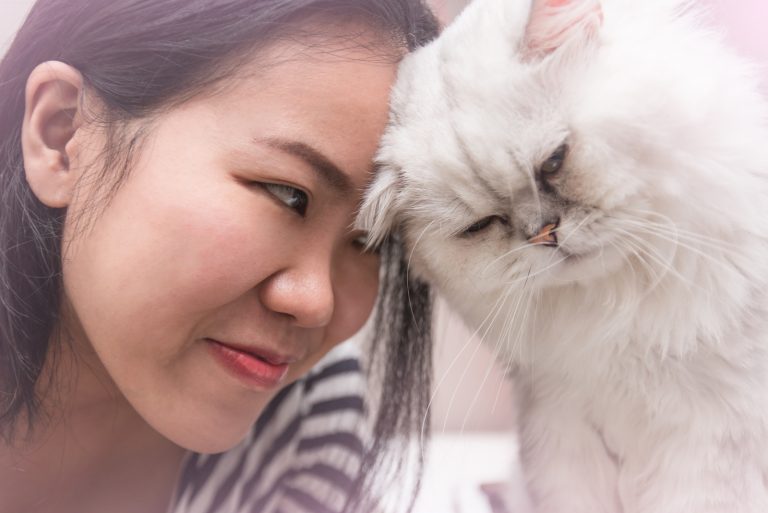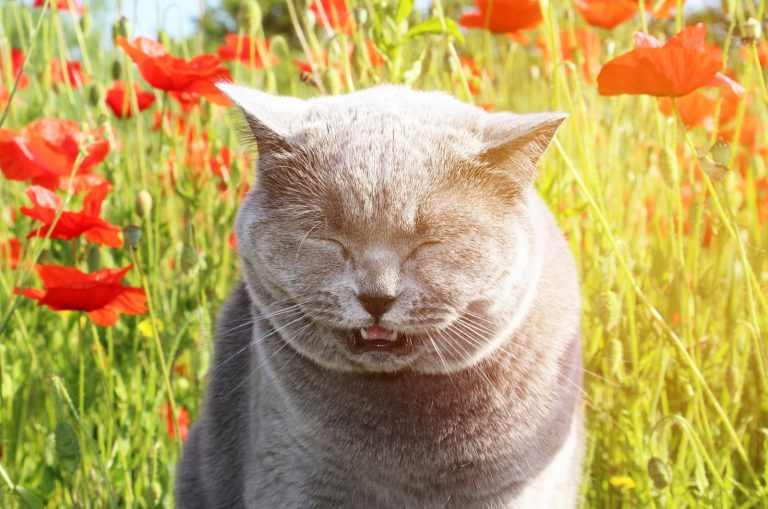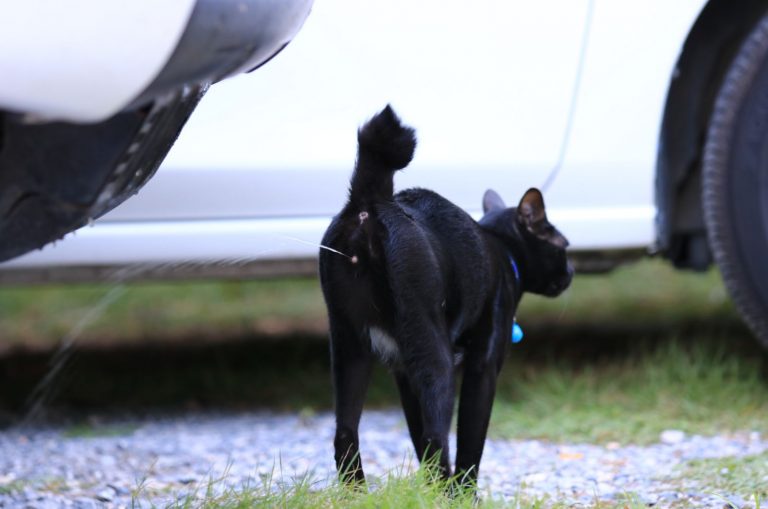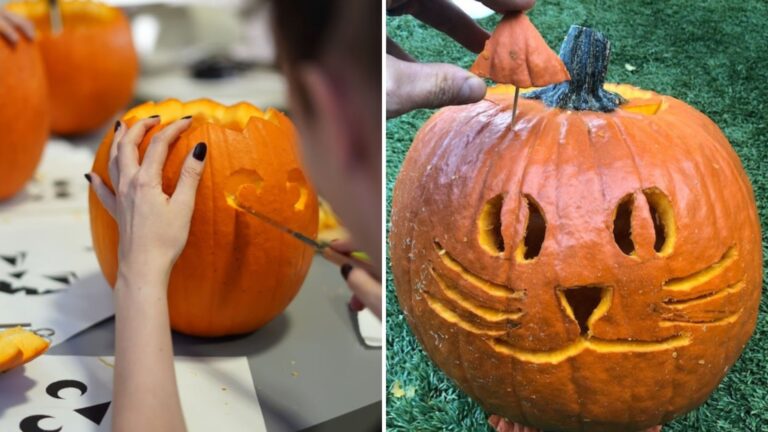Dealing With Overgrown Cat Claws – What You Need To Do
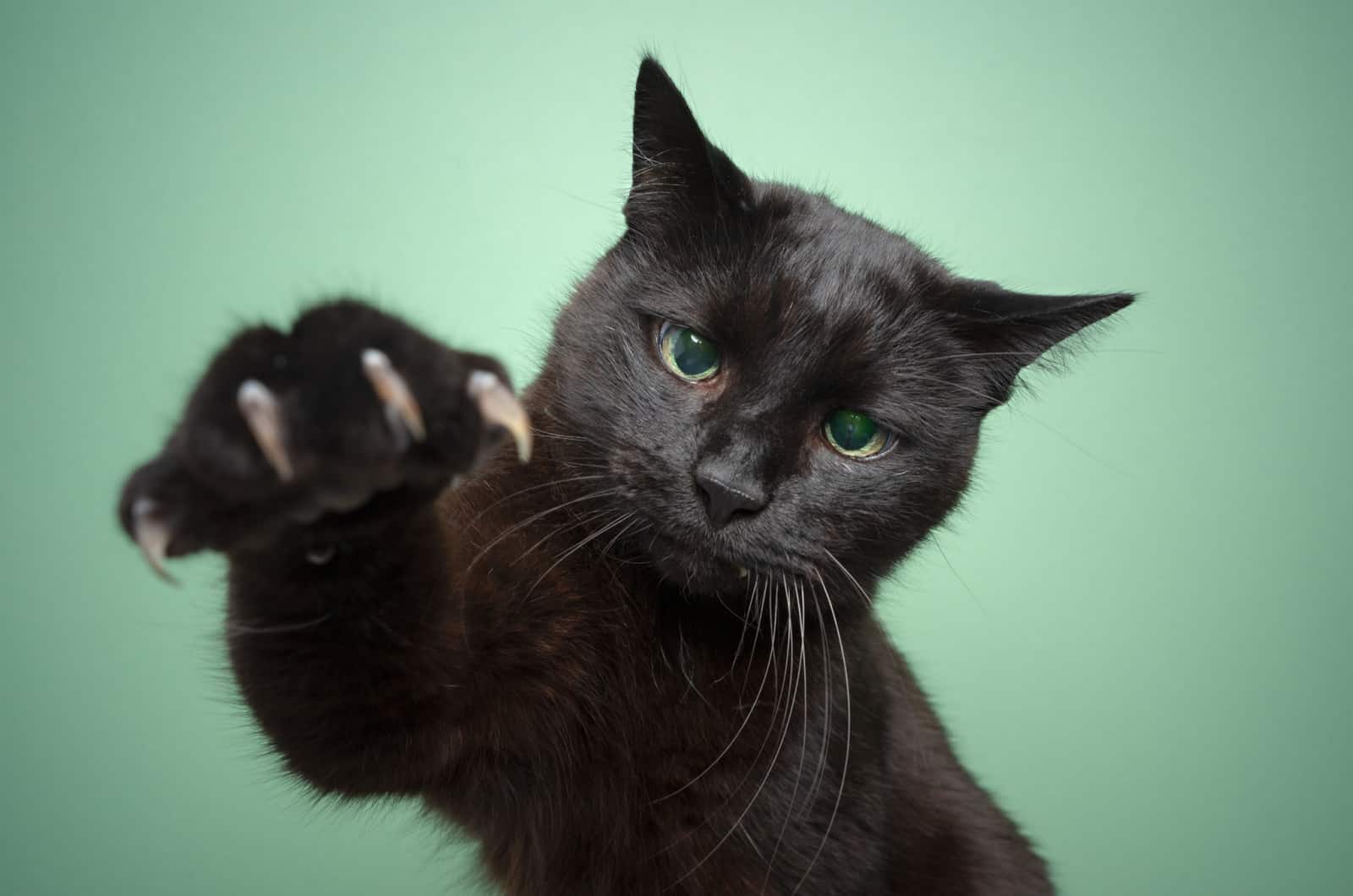
Overgrown cat claws can really damage your pet’s health, which is why including nail trimming in your weekly cat care sessions is crucial.
Cat parents need to trim their cat’s claws on a regular basis and provide suitable scratching surfaces and different materials to keep the cat interested.
Taking care of your cat’s claws is, in a way, beneficial for you as well. You don’t want to end up scratched every day because your cat’s sharp claws are too long.
Continue reading if you’ve found yourself in an overgrown cat claw situation or want to learn more about it in case it happens to your furry friend.
All About Overgrown Cat Claws
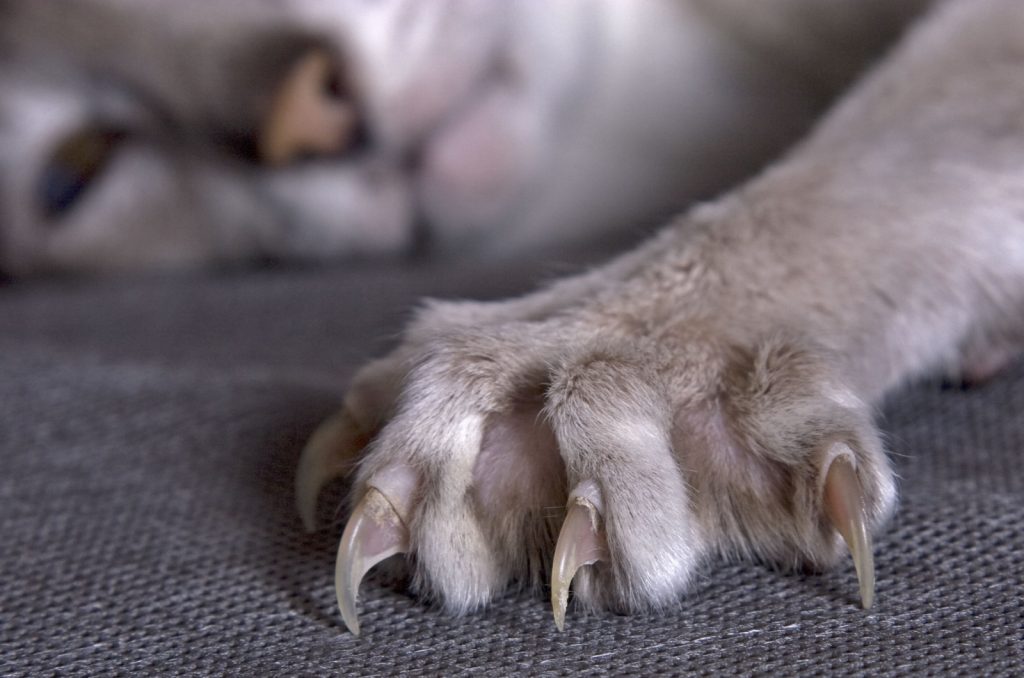
If you’re not really sure how to trim a cat’s claws, or you’ve never done it before, it might be a good idea to take your cat to a groomer.
A lot of pet owners schedule appointments with professional groomers or consult their vets before they try it themselves.
Let’s learn more about our cat’s feet and overgrown nails. First, you must know that overgrown and ingrown nails in cats are two separate issues.
In case you want to know more about ingrown cat claws, check out this article: Cat’s Ingrown Claws And How To Deal With Them.
Do They Hurt Your Cat?
Overgrown cat claws can be quite unpleasant and painful for our feline friends. If your cat’s claws become too long, they can grow back into their paw pads, causing severe pain and swelling in their feet.
This usually results in your cat limping on the affected leg. If you don’t treat it promptly, it can lead to more serious infections or even open wounds in the cat’s paw.
How Can You Know If Your Cat Has Overgrown Nails?
Most people notice that their cat’s claws are overgrown when their cat comes to knead on their lap. It’s clear that the cat’s claws are too long if it hurts when they knead.
If your cat’s claws snag on the carpet or you can hear them tapping on tiles or hard floors, that is another sign that they are too long.
Mostly, cats can sharpen their claws on their own pretty well and they won’t require additional trimming.
When you examine your cat’s claws, they should end at a sharp point, whereas cats with overgrown claws will have extremely thick claws that grow quite near their foot pads.
Dealing With Overgrown Cat Claws

Allowing your cat’s nails to grow unregulated can result in painful and hazardous overgrown cat claws. Overgrown cat nails can create a variety of issues, ranging from grooming issues to severe infection and trauma.
Many cat owners believe it’s sufficient for cats to scratch their claws on scratching posts. Unfortunately, this isn’t always the case, especially if you have a senior cat or a less active cat.
This might be true for a cat’s back legs since most cats are good at shedding those nails, but their front paws will most likely need some attention.
The good news is that you can avoid these health issues by taking easy, proactive measures! But first, let’s see what the most common causes of overgrown cat claws are.
Infections
It’s sometimes hard to tell whether the infection has occurred due to overgrown cat claws or whether the infection was caused by them.
Overgrown claws are frequently connected with bacterial or fungal diseases. In the case of bacterial infections, you’ll notice the following:
• diarrhea
• lethargy
• fever
• loss of appetite
• cuts and wounds
In the case of fungal infections, the following symptoms will be present:
• bloody nose discharge
• swollen nose
• cysts
• coughing
• sneezing
• anemia
Blood tests and an examination will be performed to analyze white blood cell counts and other concerns. If your veterinarian detects an infection, it will be treated with either oral drugs or topical ointments.
Trauma In The Claw Area
If your cat develops overgrown cat claws, it might be caused by trauma in the claw region. When a cat’s nails are traumatized, it is more serious than when we do it to our nails.
Cat’s claws are attached to the bone, so if they are harmed, the claws might become misplaced or malformed. Swollen toes, a missing nail, or a broken one, are all symptoms of claw damage.
You can cure a broken claw at home by removing the injured component and protecting it from getting infected.
However, in most situations where there has been trauma, it’s best to take your cat to the vet just to ensure that there’s no hidden trauma. Your vet might also do an x-ray to confirm that no other portion of your cat’s paw is affected.
Breakable Claws

Brittle or breakable claws are more prevalent in senior cats. They most usually have thick claws as well, thicker than younger cats. To avoid overgrowth, more regular cutting is required.
Without trimming, the claw’s layers tend to build up, resulting in overgrown claws. This can result in bleeding or infections.
If your cat’s claw has already come into contact with its foot pad, it’s better to see a vet since they can provide medications.
If the pad is untouched, then you can treat the problem at home by trimming your cat’s claws more frequently.
However, you always have to be careful. If you cut too close to the base of your cat’s claw, you might harm it.
Autoimmune Disorders
Cats can be born with or develop an immunodeficiency condition later in life. Autoimmune diseases are the most common immune system problems.
Autoimmune disorders can manifest themselves in a number of ways, including enlarged claws.
These immune-deficiency disorders reduce the efficacy of the immune system, thereby increasing the likelihood of getting sick, but they can be very difficult to diagnose.
Immune system disorders are diverse, with hundreds of distinct symptoms depending on the ailment. If you suspect a problem, take your cat to the vet.
To narrow down particular concerns, the vet may do skin biopsies, blood testing, and other procedures.
Growth Hormones Too High
Acromegaly is most likely the source of high amounts of growth hormones in cats. This is a condition induced by a pituitary tumor that secretes an excessive quantity of growth hormone. It is more common in males and elderly cats.
Symptoms related to diabetes are the most commonly observed. These include increased urination, excessive thirst and hunger, and weight loss. Because acromegaly can lead to diabetes, these are the most visible symptoms.
Acromegaly, on the other hand, can create additional problems within the body.
Other difficulties occur as cancer secretes growth hormones, such as the expansion of the limbs, cranium, and muscles. Cats can also have an enlarged heart.
Poor Blood Circulation
Near the tip of a cat’s claws is a blood supply, and poor circulation in those areas can be the cause of your cat’s enlarged claws.
Poor circulation is an indication of some underlying condition, such as thyroid illness, hypertension, or anemia.
These problems can become severe, which is why you should take your cat to the vet for treatment. Thyroid illness might have an impact on your cat’s hormone levels.
Furthermore, impaired circulation is a typical indication of heart disease, which must be addressed as soon as possible.
Cold extremities, blue paw pads, and a yellowish mouth are all signs of impaired circulation. These are easy to overlook since they need close contact or a careful examination of the problematic areas.
If your veterinarian detects poor circulation, blood tests and a physical examination are necessary to discover the reason.
Medication is the most frequently prescribed treatment option for heart or thyroid problems.
Health Issues
• Hyperthyroidism – not only can it cause the overgrowth of your cat’s claws, but also excessive thickness.
• Diabetes – causes a lack of blood flow to the cat’s claws.
• Arthritis – can hinder your cat from scratching, which means your cat won’t shed its outer sheath. Older cats with arthritis frequently struggle with general grooming, including claw care.
The Risks Of Overgrown Cat Claws

If your cat’s claws become too long, it will not only be uncomfortable and painful for them, but it may also lead to serious health issues.
Infections
As I’ve already said, sometimes an infection can be the cause of an overgrown cat claw, and other times this overgrowth leads to infections.
When your cat has a puncture, the danger of infection increases dramatically. If your cat’s nails penetrate the bottom of its feet, they may become infected. This may require antibiotics in some cases.
Pain And Discomfort
Even mildly overgrown nails might cause pain and suffering for your cat.
When your cat’s claws catch on your clothing or furniture, it’s an indication that his or her nails are becoming too long. It’s time for nail trimming!
Punctures
Once the claws have grown past the snag point, they will begin to curl beneath your cat’s pads. The nails can penetrate your cat’s paw pads, causing severe agony.
Flexibility Issues
As your cat’s nails become longer, they will press against the ground while walking. The pressure in your cat’s toes causes your pet to walk in agony.
As the nails get longer and curl under, your cat loses flexibility and mobility, not just when they’re walking, but also while climbing and jumping.
Care And Prevention

When your cat’s nails become too long, their quality of life suffers. Cats like running, jumping, climbing, and playing. These activities provide good activity for your cat and meet its demands.
With overgrown claws, your cat feels discomfort and pain, no longer walks with ease and elegance, and is at risk of infection.
You must take care of your cat’s claws, so let’s see what nail care and prevention includes.
Regular Trimmings
Include a paw check in your weekly cat grooming sessions to detect any issues with your cat’s nails as well as any additional growths or injuries to the paws.
And, by making a schedule, you’re more likely to stick to it and avoid future overgrowth issues.
Maintaining a trim schedule is also an excellent way to make nail clipping easier and more pleasurable for both you and your cat.
Overgrown cat claws will be more difficult to trim and will most likely cause discomfort. However, a small timetabled cut will eliminate this risk totally.
Training The Quick
“The quick” (the nerves and blood vessels supporting the cat’s nail bed) lengthens as cat nails develop. This blood vessel can easily be seen if your cat has light-coloured nails. The quick becomes longer as your cat’s nails develop.
This complicates the trimming of overgrown nails since you shouldn’t trim your cat’s nails too short. Instead, concentrate on small, regular trimmings. The quick recedes as you keep your cat’s nails trimmed, making routine trims easier.
Consulting With The Vet
Veterinary treatment is necessary for extreme situations. Before you can begin routine care, your veterinarian may have to remove the claw from the pad and cure any underlying infections.
If the overgrowth hasn’t yet breached the cat’s skin, you can detach it with tweezers and then begin trimming.
However, before you begin trimming, consult your veterinarian for safety tips and advice on your cat’s individual condition.
Avoiding Overgrowth
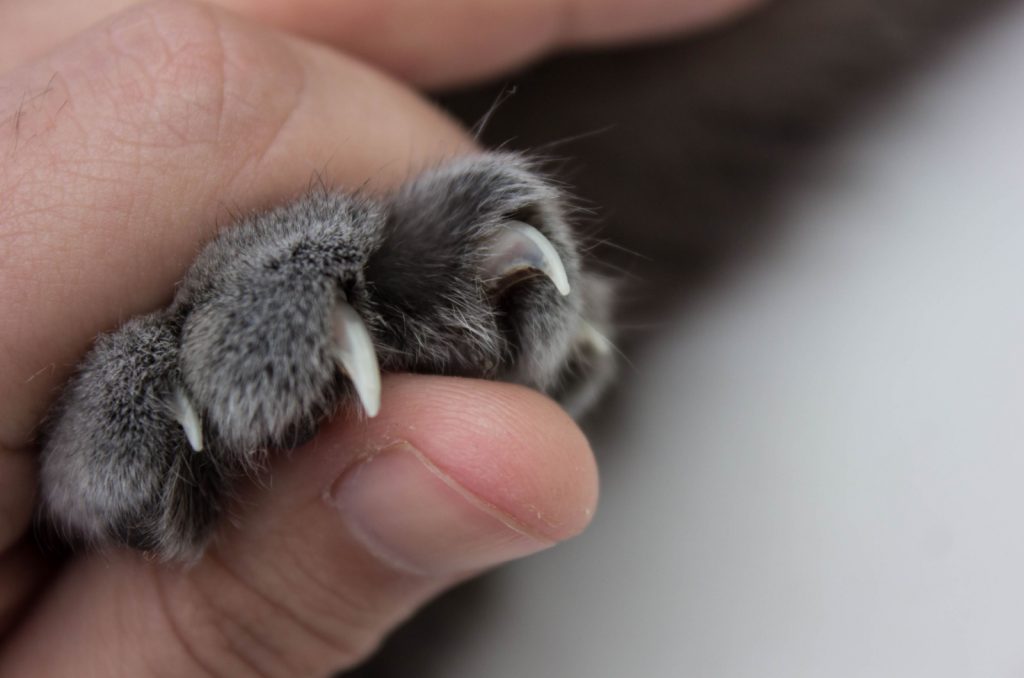
The secret to dealing with long cat nails is to avoid them in the first place. The goal is to trim your cat’s claws with appropriate cat nail clippers to a healthy length and keep them that way.
Trimming your cat’s nails needs to be a part of your cat’s regular grooming routine. How often you trim your cat’s claws will depend on your cat and how quickly its claws grow, but aim for at least every two weeks.
Regular Trimming Is The Best Prevention
Regular grooming and maintenance of your cat’s claws should also include opportunities for scratching.
Most cat lovers think that only outdoor cats can take care of their own claws by scratching the trees outside.
These cats use natural resources such as tree bark to keep their claws the right length. Indoor cats want a surface that resembles nature; the trick is to choose a surface that your cat enjoys using.
It takes a lot of patience and time to heal from overgrown cat claws.
Regular trimming and plenty of scratching posts and opportunities to scratch will help you and simplify the maintenance of your cat’s nails.
If you’d like, I suggest looking into cat-proof air mattresses – you don’t want you kitty’s claws to prevent your friends from sleeping over, right?
Final Words
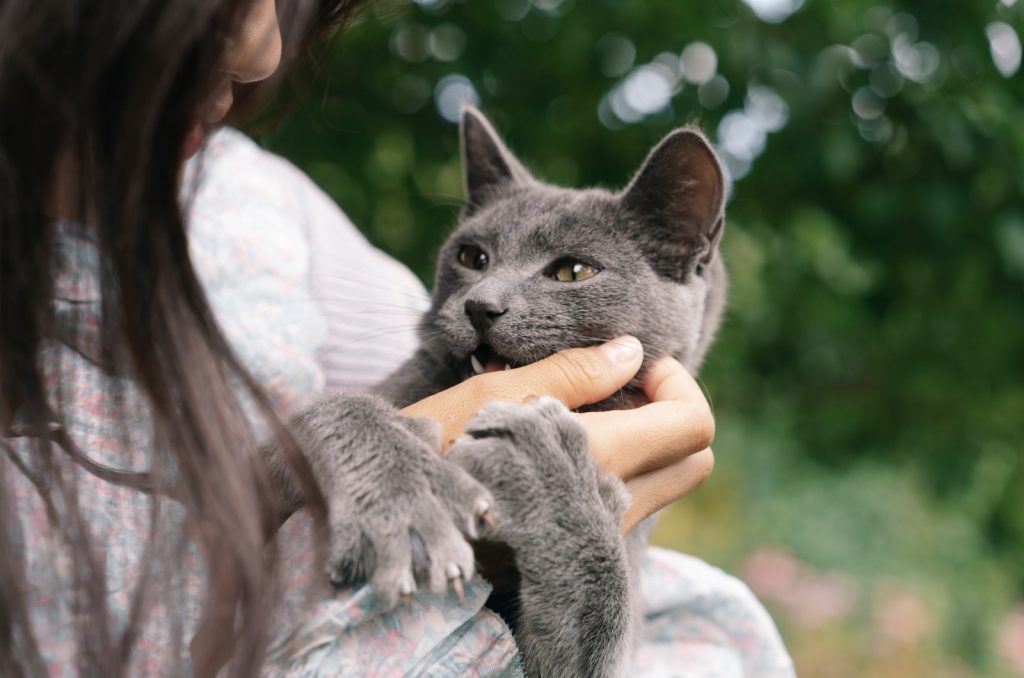
If your cat’s claws become too long, you should trim them before they become ingrown claws. That’s an even bigger issue, and if it happens, you should ask your vet for help.
Your vet will treat your cat and look for other symptoms of infections and provide medication if needed. So, to sum up, regular grooming overall should include nail trimming as well.
You need to take proper care of your cat’s claws in order to avoid any unnecessary conditions and health issues.
Overgrown cat claws can be unpleasant and uncomfortable for our beloved cats.
If your cat’s claws become too long, they can grow back into their paw pads, causing a lot of discomfort and swelling in their feet and causing your cat to limp on the injured limb.
If not treated promptly, it can progress to more serious infections or even open sores in the cat’s paw. So, treat the problem as soon as possible to avoid it progressing any further!
Related Articles:
• Cat Nail Caps – Everything You Need To Know
• How To Cure A Cat’s Broken Toe? Symptoms, Treatment, & Care
• Symptoms Of An Ingrown Cat Claw And How To Help
Like this post? Share or pin it for later!


